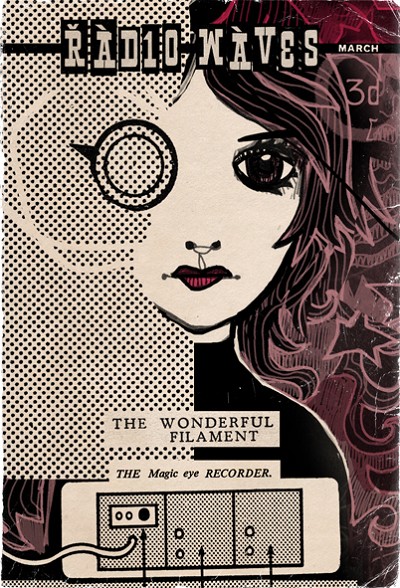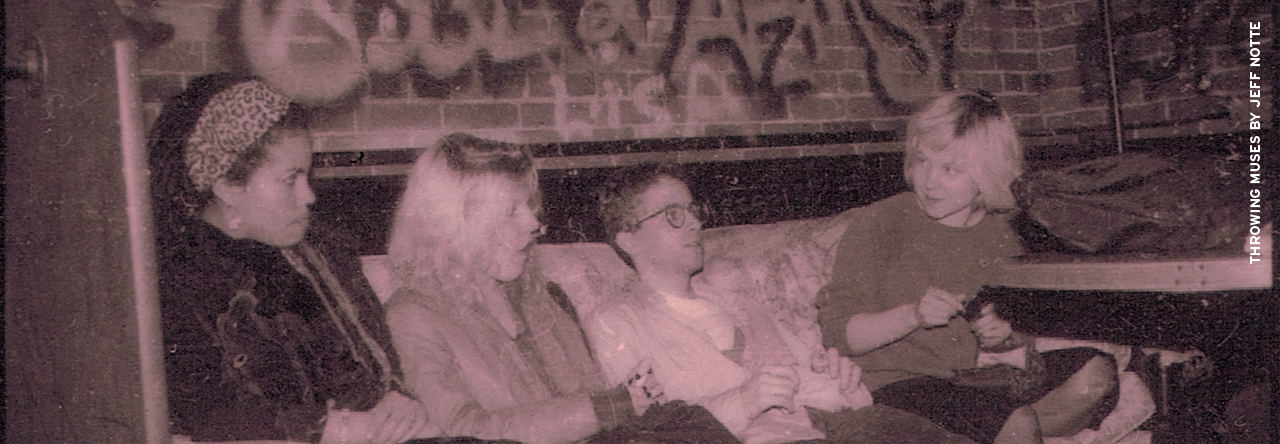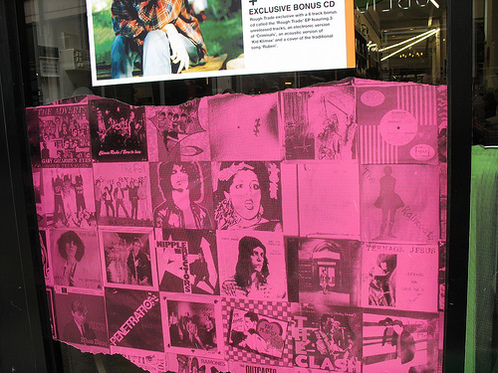
In Dennis Potter’s classic mini-series The Singing Detective, characters frequently, and without warning, burst into song, channeling the sounds of the past in order to put an optimistic (and often ironic) gloss on a dark present.
As with Potter, the playful, sometimes eerie sound collages of British groups Broadcast, the Focus Group, Moon Wiring Club and Belbury Poly conjure up an alternate reality—an eccentric, occasionally unsettling combination of cold war dread and boundless optimism.
Belbury Poly’s Jim Jupp (also co-owner, with House, of record label Ghost Box International), pinpoints the off-kilter sound as the precise juxtaposition of “ancient and modern, or the cosmic and the parochial.”
Less a full-blown genre than a state of mind, “hauntology” (as it has been dubbed by Simon Reynolds) mixes such far-flung influences as early analog electronica, musique concrete, library 78s, Italian film soundtracks and old newsreels into something wholly other yet quintessentially British in flavor.
Studio maverick and musical (brico)lagist Raymond Scott is also revered, as is twisted folk from the 70s (Wicker Man and Valerie & Her Weeks of Wonders being particular touchstones), as well as sultry echoes of Tropicalia and other 8-track exotica.
Taking a cue from Scott, collage is the primary form, with sounds sampled from thrift-store finds, dusted off and given new life. Vocals are generally not sung, but intoned, with a bit of radio static for extra verisimilitude.
There’s a tinge of sci-fi to be sure — “the future is now” — mixed with nostalgia and the desire to recapture the idea of community in a pre-digital age, using digital tools as the medium. (These songs are preoccupied by yearnings for a pre-lapsarian, pastoral world; the Brutalist architecture embodied by the New Town movement is simultaneously revered and reviled, as is the very concept of Suburbia.)
Take, for example, Broadcast & the Focus Group Investigate Witch Cults Of The Radio Age (Warp), a new maximalist extended player from Broadcast in collaboration with Julian House, the like-minded mastermind of the Focus Group. This collagist kaleidoscope plays out like an album-length socio-ethnographic séance, sprinkled with quasi-historical references and half-remembered voices. True to its title, the resulting spectral sounds seem to emanate from an imagined future.
Oddly, American band Dymaxion was among the first groups to really hit upon this sampladelic, largely instrumental style.
Like Kurt Schwitters, this short-lived but fantastic band were expert at culling beauty out of junk; their retro-futuristic collage aesthetic consistently yielded surprising, devilishly catchy results. Their 1997 track “Haunted Radio” (written for a marvelous one-off Vesuvius compilation called Spooky Sounds of Now) could be a thesis statement for the ghostly sounds to follow. Their posthumous singles compilation, 4+3=38.33, may still be available from Duophonic. (Dymaxion principal Claudia Newell has begun posting new music on her blog, Maison Atomisée).
Oakland, California duo Crawling with Tarts pre-dates Dymaxion by a number of years, taking an abstract, musique concrete approach. Their two-song suite Grand Surface Noise Opera is composed for two turntables and uses “surface noise as a binding element” (to quote co-composer Michael Gendreau). It’s also about building narrative, layering voices and tonalities to create mood and to shift meaning (both linear and non-linear). In a 1999 interview, the Gendreaus traced the piece’s origins back to England, specifically, a record store in Portobello Road…
![]() Broadcast & the Focus Group, “Love’s Long Listen-in” (from Investigate Witch Cults of the Radio Age, 2009)
Broadcast & the Focus Group, “Love’s Long Listen-in” (from Investigate Witch Cults of the Radio Age, 2009)
![]() Dymaxion, “I-Man Transport (from 4+3=38.33, 2002)
Dymaxion, “I-Man Transport (from 4+3=38.33, 2002)
![]() Crawling with Tarts, “Grand Surface Noise Opera No. 3 (Indian Ocean Ship)” (fromOperas 3 & 4)
Crawling with Tarts, “Grand Surface Noise Opera No. 3 (Indian Ocean Ship)” (fromOperas 3 & 4)
IMAGE BY IAN HODGSON AKA MOON WIRING CLUB, FROM THE BLANK WORKSHOP


